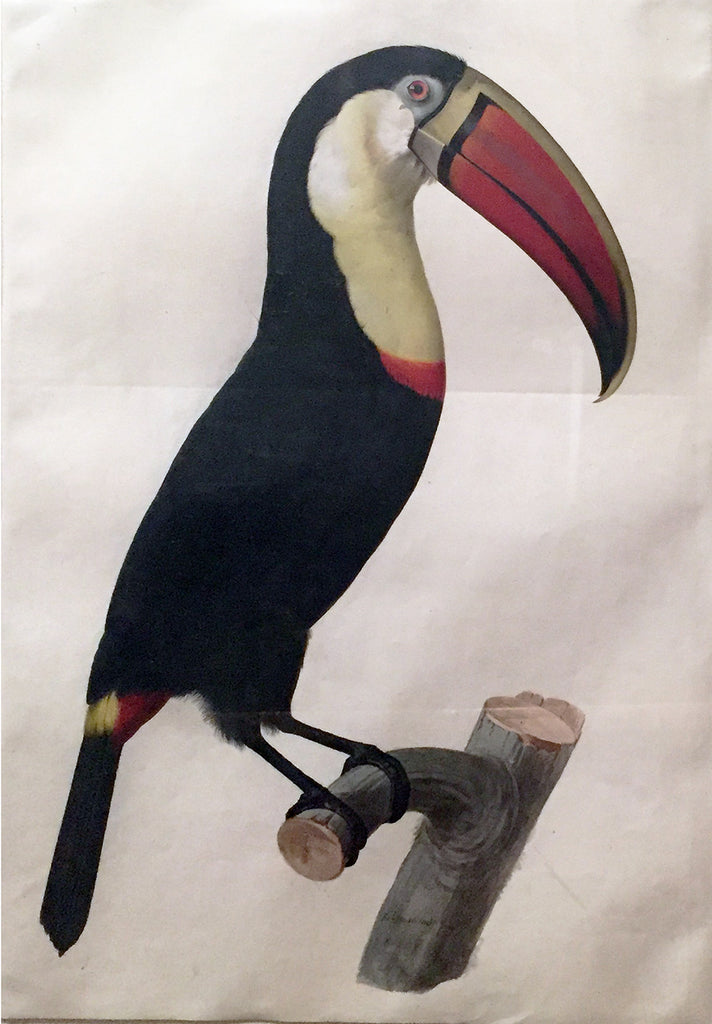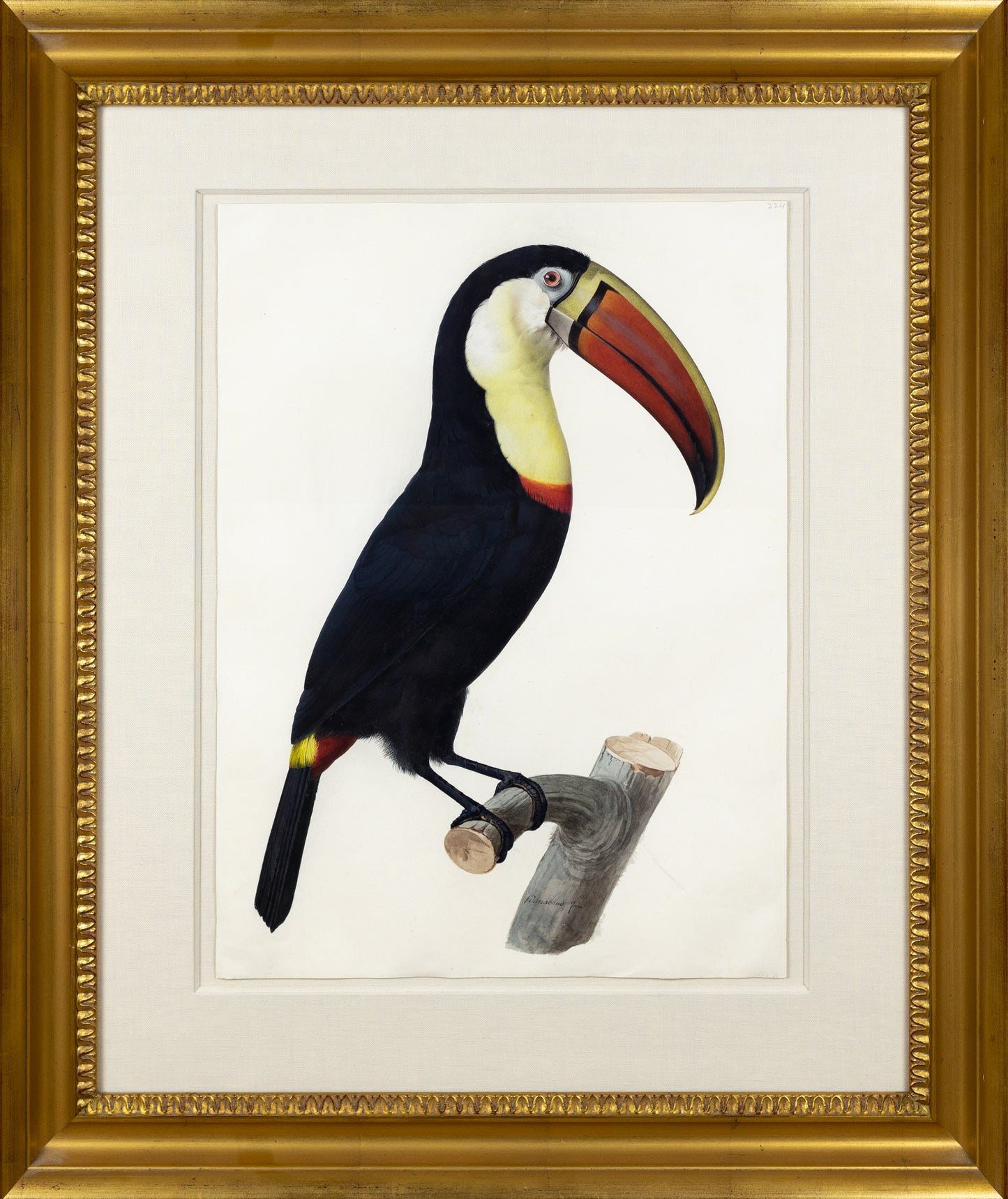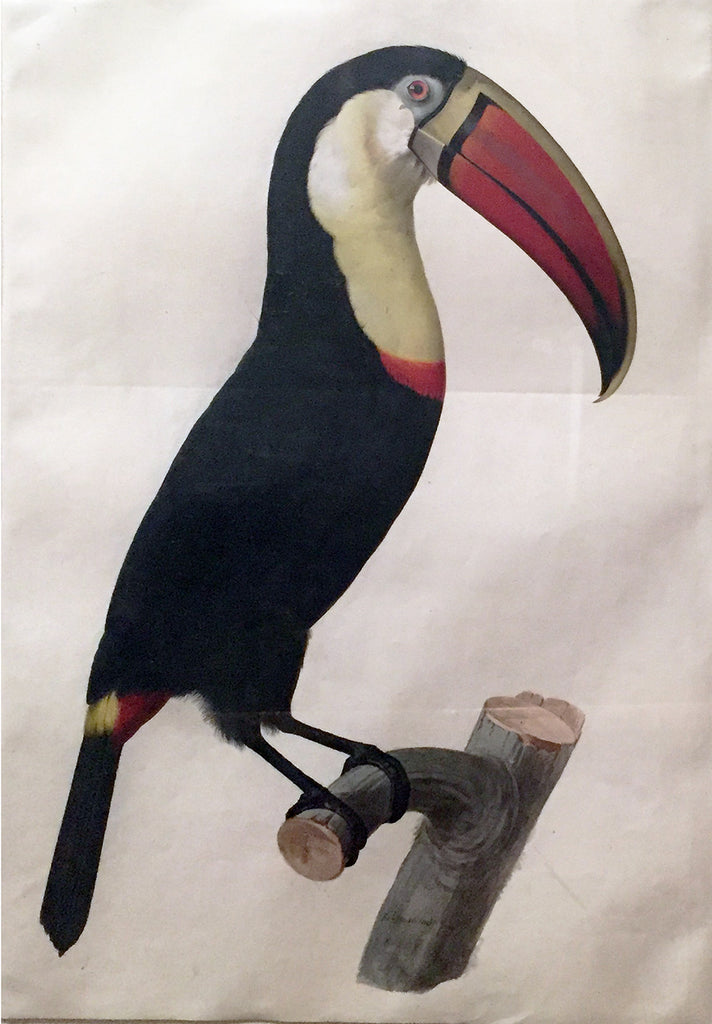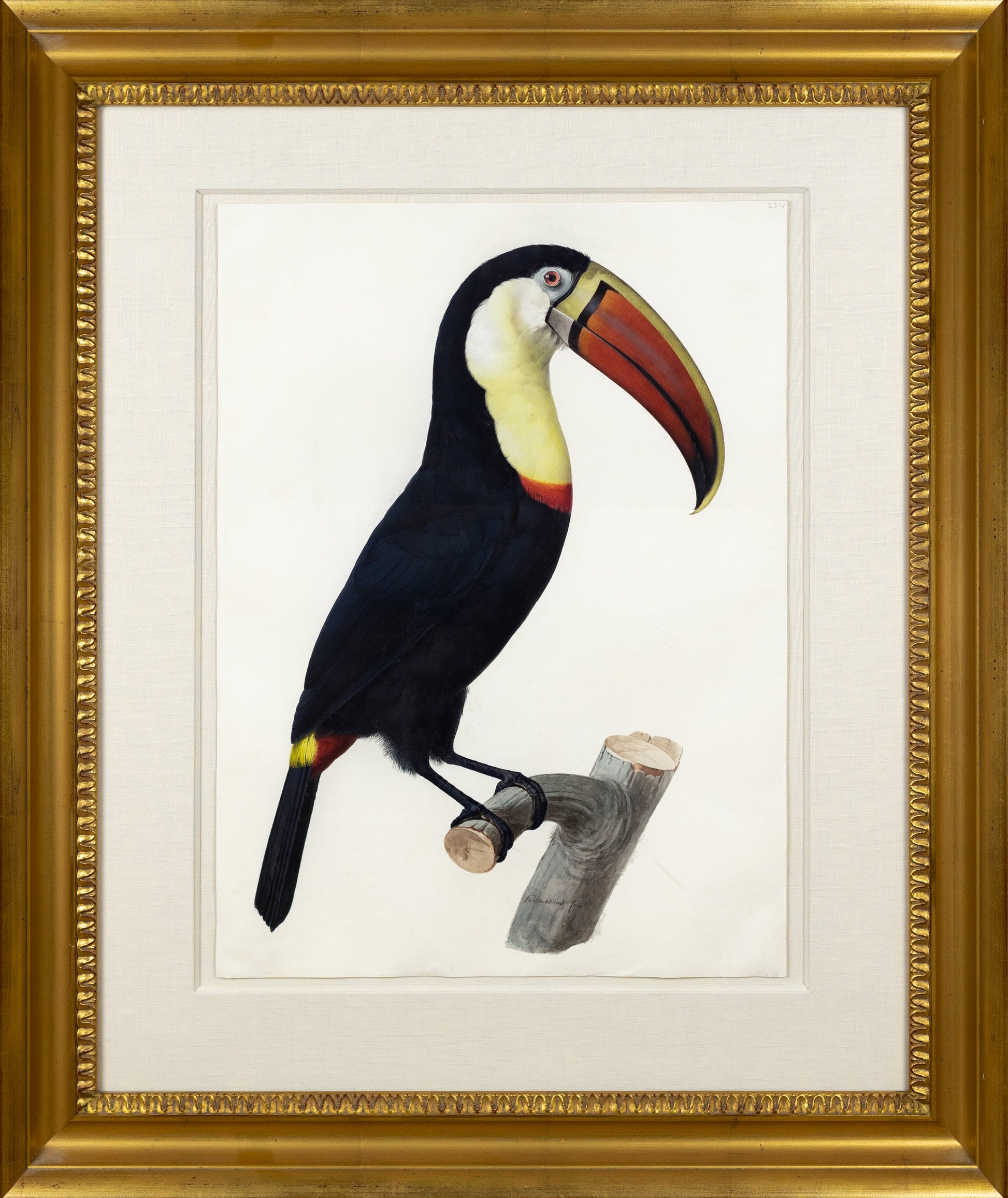Jacques Barraband (French, 1767-1809), Le Tocan
Jacques Barraband (French, 1767-1809), Le Tocan
Couldn't load pickup availability
JACQUES BARRABAND (FRENCH, 1767–1809)
Le Tocan [Red Billed Toucan]
Prepared for Plate 3 in Histoire naturelle des oiseaux de paradis et des rolliers, suivie de celles des toucans et des barbus (1801–1806)
Watercolor and gouache on paper
Signed: Barraband fecit
Annotated: 224 upper right
Paris, ca. 1800
Paper size: 20 1/2 x 15 in.
Frame size: 31 1/4 x 26 1/4 in.
Price: $275,000
The red-billed toucan is a subspecies of the White-throated toucan, and it is found in south-eastern Venezuela, the Guianas, and northern Brazil.
Levaillant wrote of this bird:
“This toucan has the body, tail, and wings modeled, for proportions, on these parts of the preceding species; but its beak is not nearly so disproportionate to its size, for it is, in the largest individuals, only about six inches in length by two inches in height, and ten lines in width at the base. These two birds differ again in the form of their beaks, in that that of the toco is much thicker throughout its entire extent, and that the upper mandible is in it very sharp on its edge, while in the tocan, it is rounded.
The colours are also totally different: here, the two mandibles are terminated at their bases by three parallel transverse bands; the first, which is black, and which is only one line in width, outlines the contours of these bases; the second, six times wider, and yellow, communicates, on the upper mandible, with another band of the same color, which runs along its rounded edge to the tip of this mandible; the third band is black, and half as wide as the second…
The tongue of the toucan, which also imitates by its structure the form of a narrow feather, is, as well as the whole inside of the mandibles, of a reddish color. The eyes are of a reddish brown, and surrounded by a bare bluish skin. The tarsi, feet and nails are black; they appear such at least in all the dried individuals that I have seen.
A very marked character in the plumage of this species is that the upper coverts of the tail are of a beautiful yellow which has the shine of unbleached silk. These feathers are with decomposed beards and do not extend nearly as far on the tail as those of the toco. The top of the head, back of the neck, mantle, entire wings, tail, and generally the whole underside of the body are of a pure black, which, on the wings and tail, is shiny and takes on a slight greenish tone in the light.
The front of the neck is white slightly tinged with yellow, which darkens toward the chest and is encircled by a bright red collar. A small triangle of white feathers is visible between the upper angle of the eye and the nostrils. The coverts of the underside of the tail are red, matching the collar.
The folded wings do not exceed the upper tail coverts. The female is slightly smaller than the male and differs in having the entire front of her neck pure white. However, in collections, the yellow on males fades quickly, as does the vivid yellow of the tail coverts and the bright colors of the beak—leading to multiple misidentifications of species based on these changes.
The toucan is found throughout South America. It is especially common in French Guiana and Dutch Guiana, particularly in the forests surrounding Cayenne and Surinam. It frequents the woods and, like the toco, feeds on fruits rather than fish—despite the claims of several "Methodist nomenclators."
 Barraband’s work was illustrated as plate 3
Barraband’s work was illustrated as plate 3




